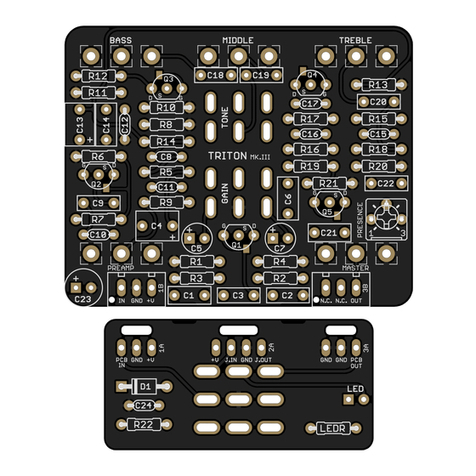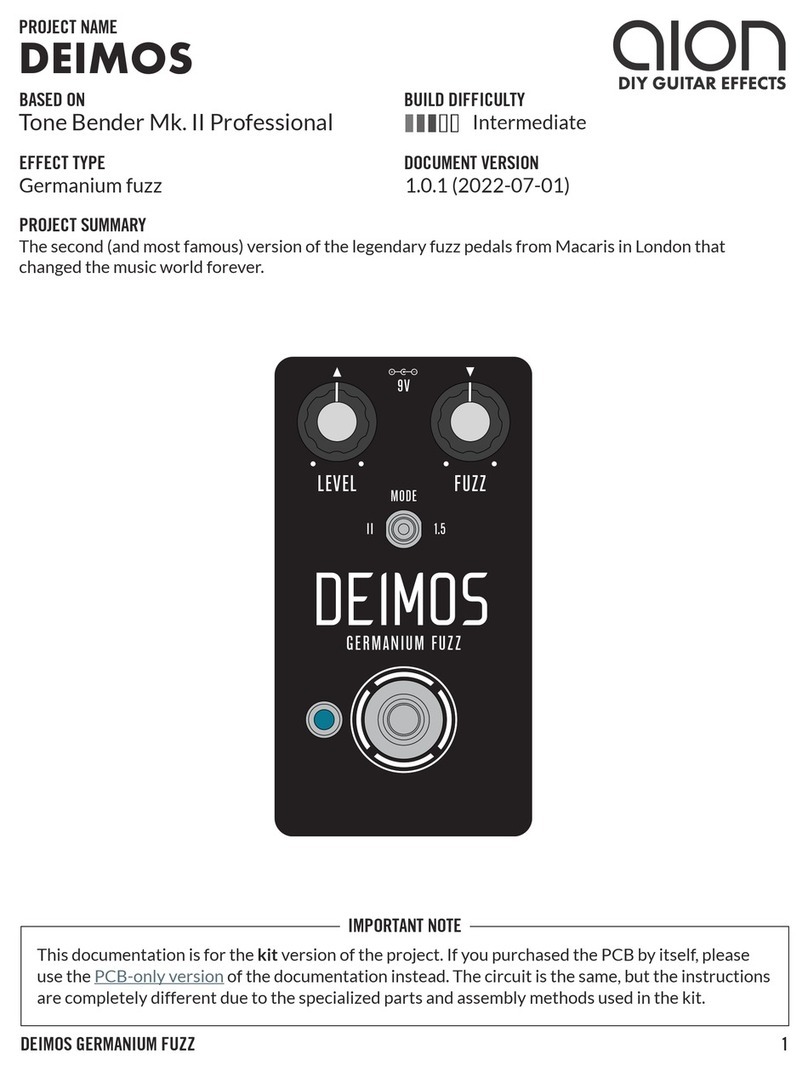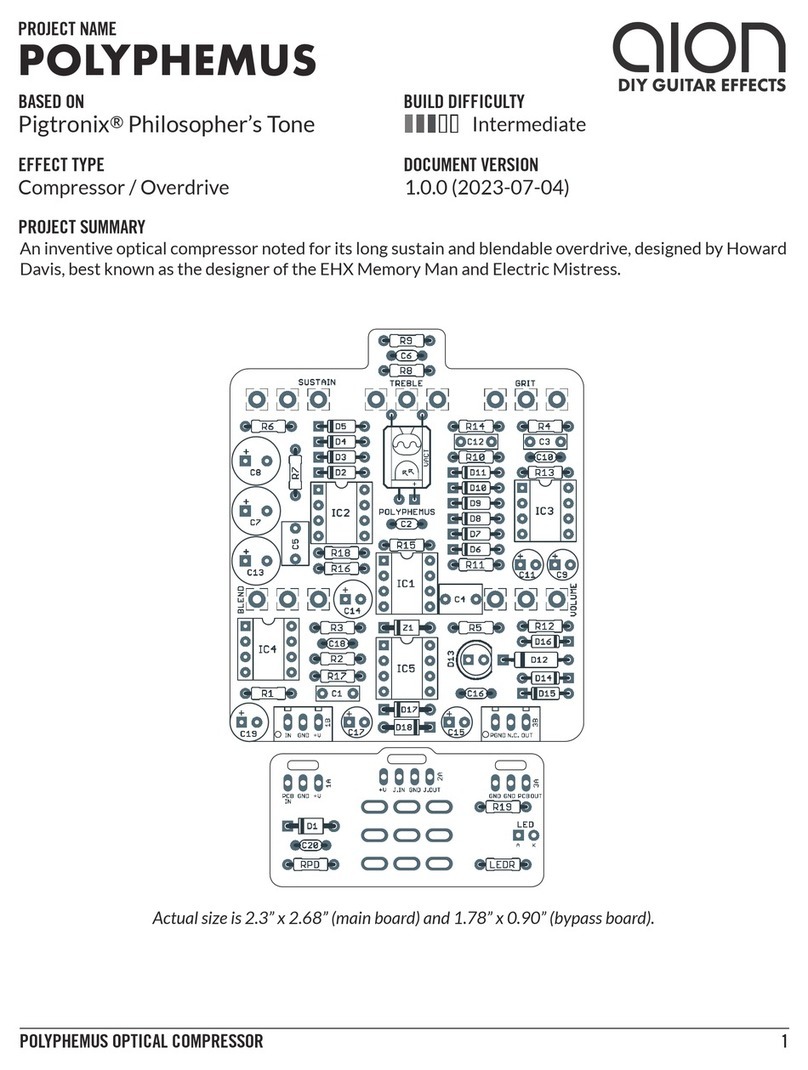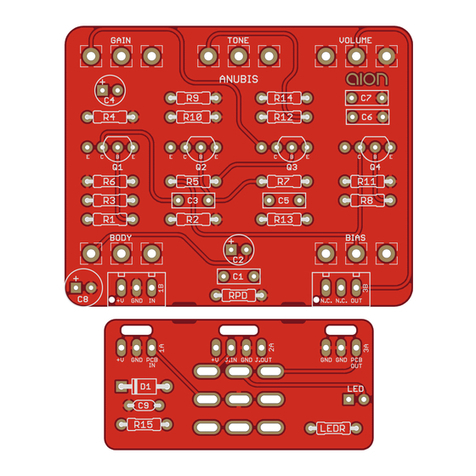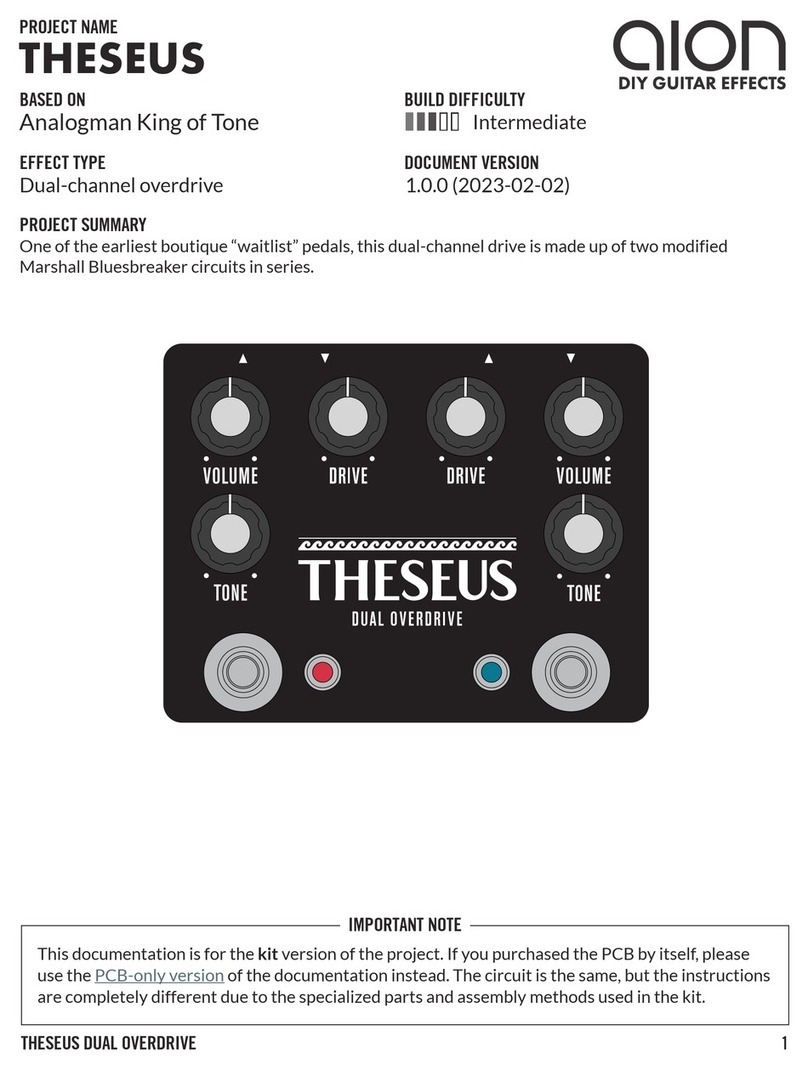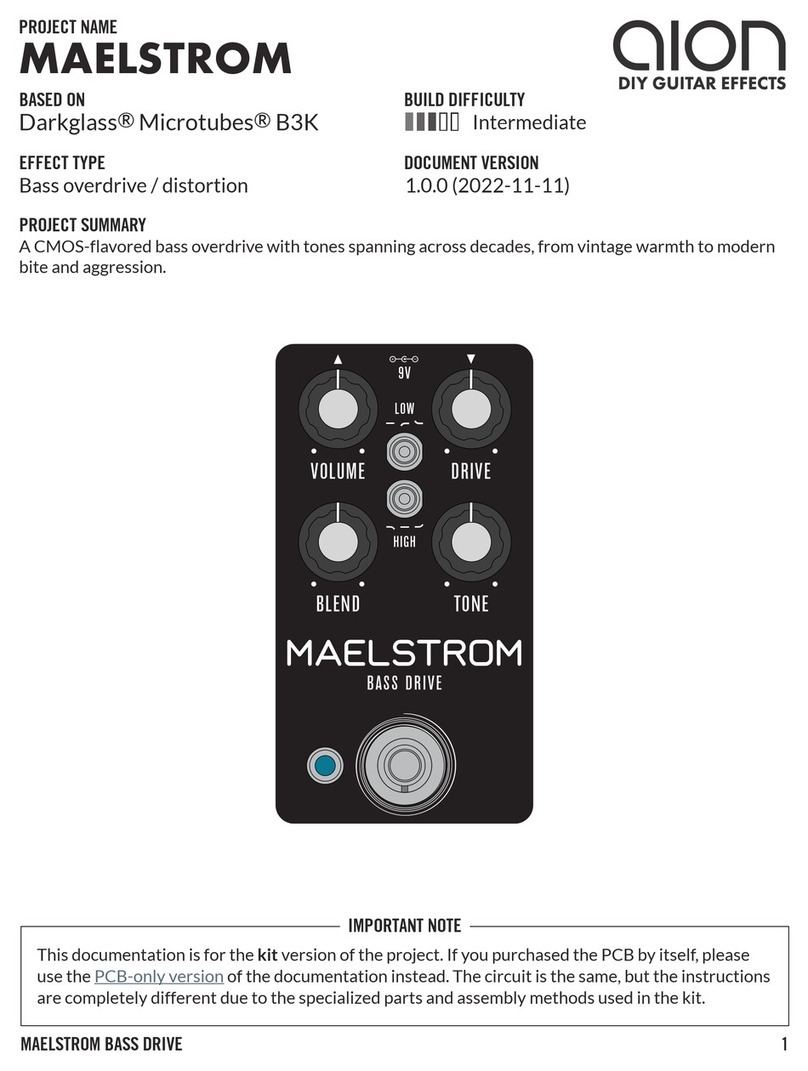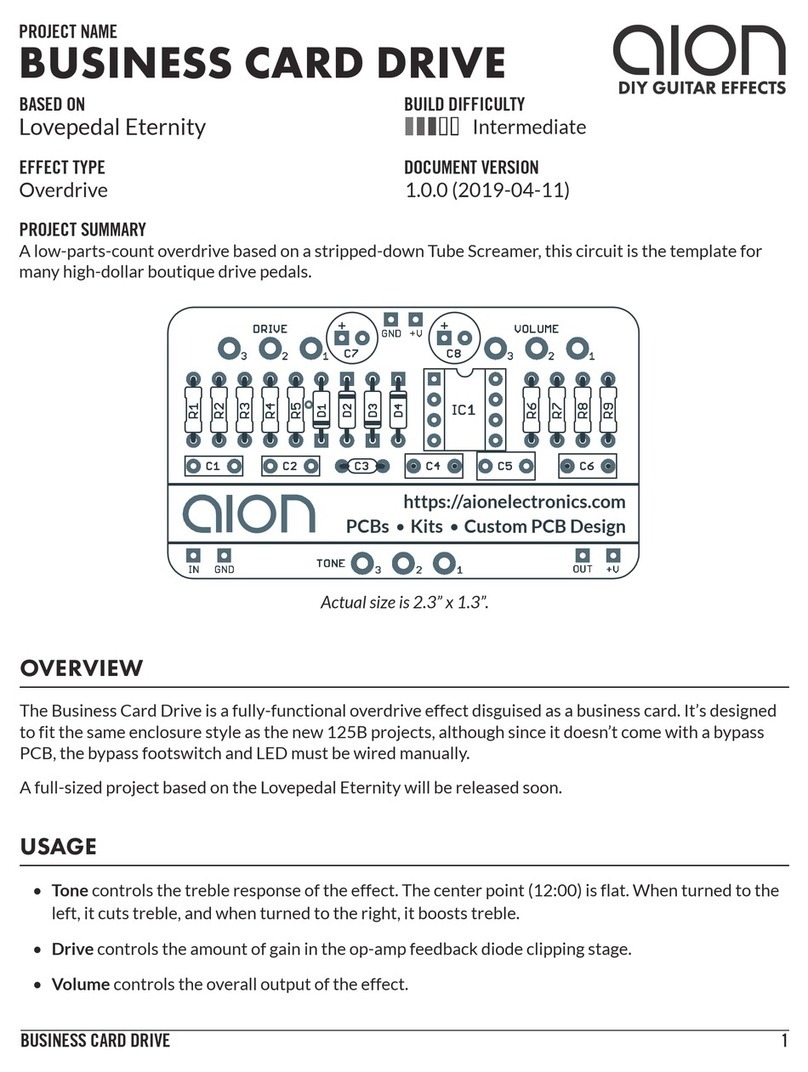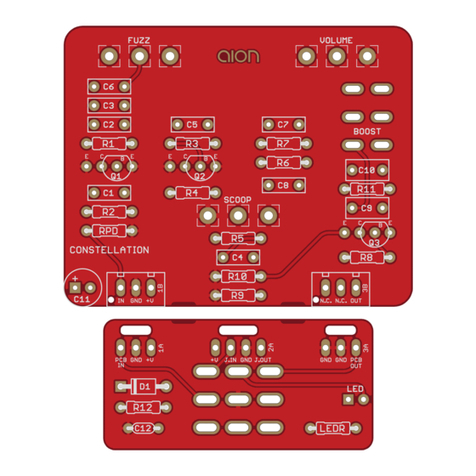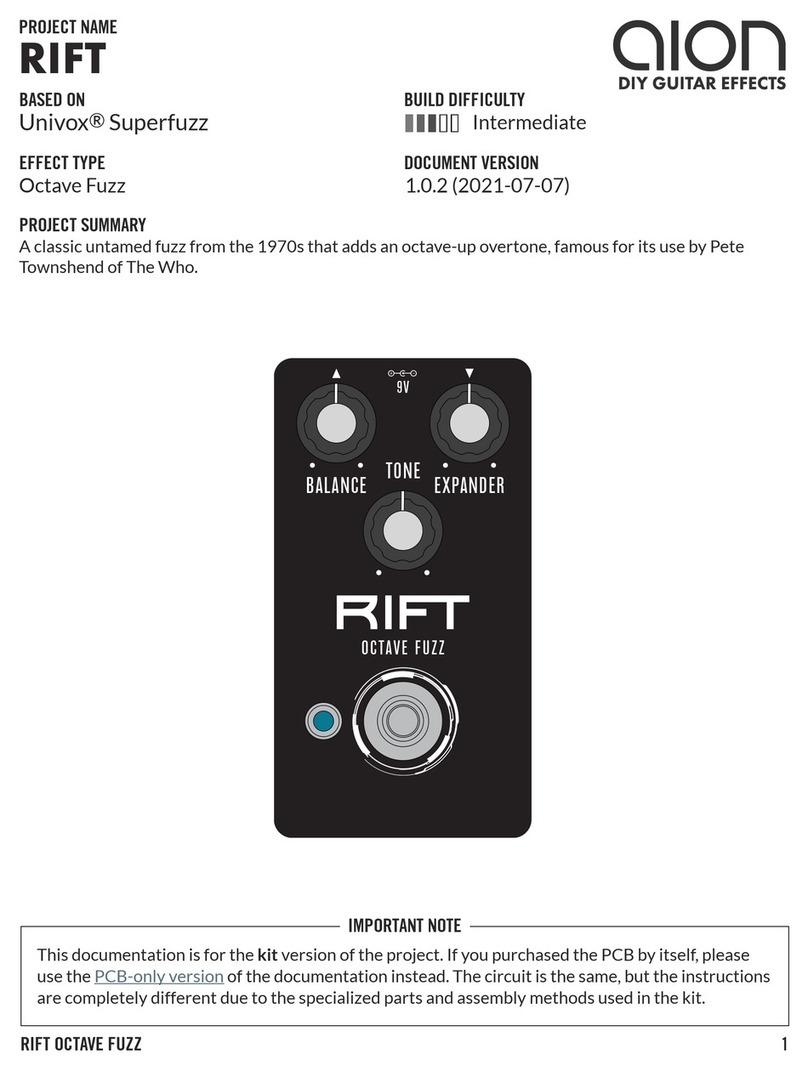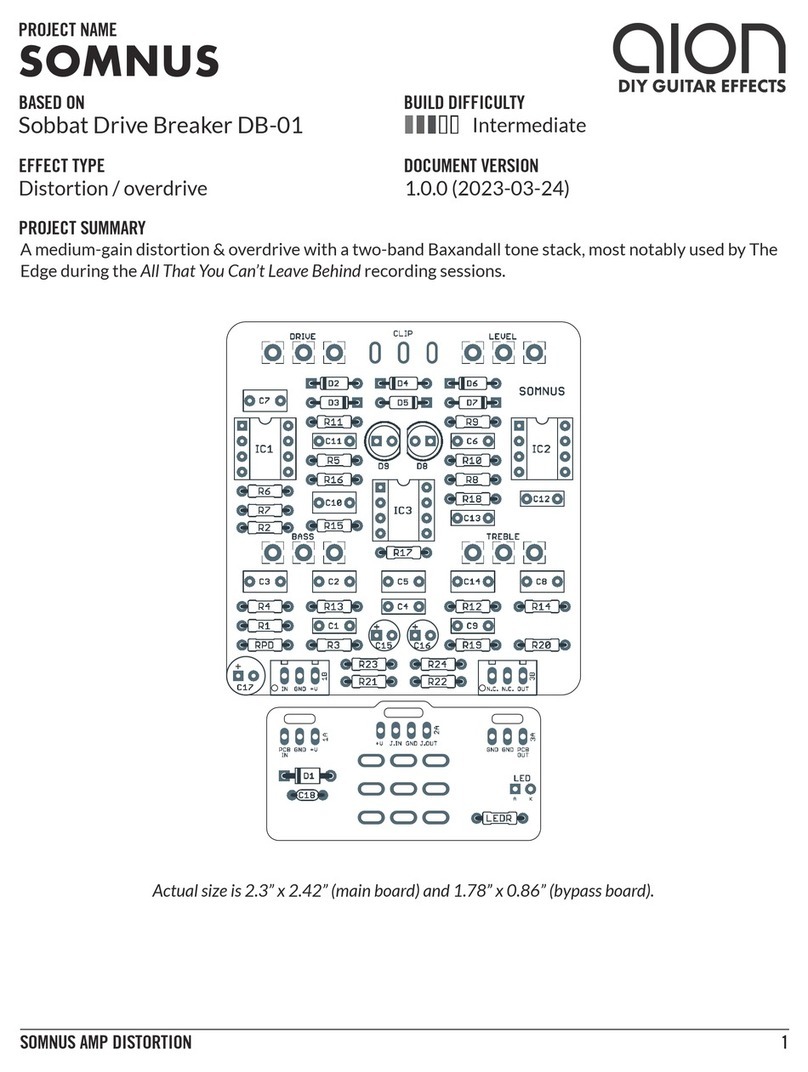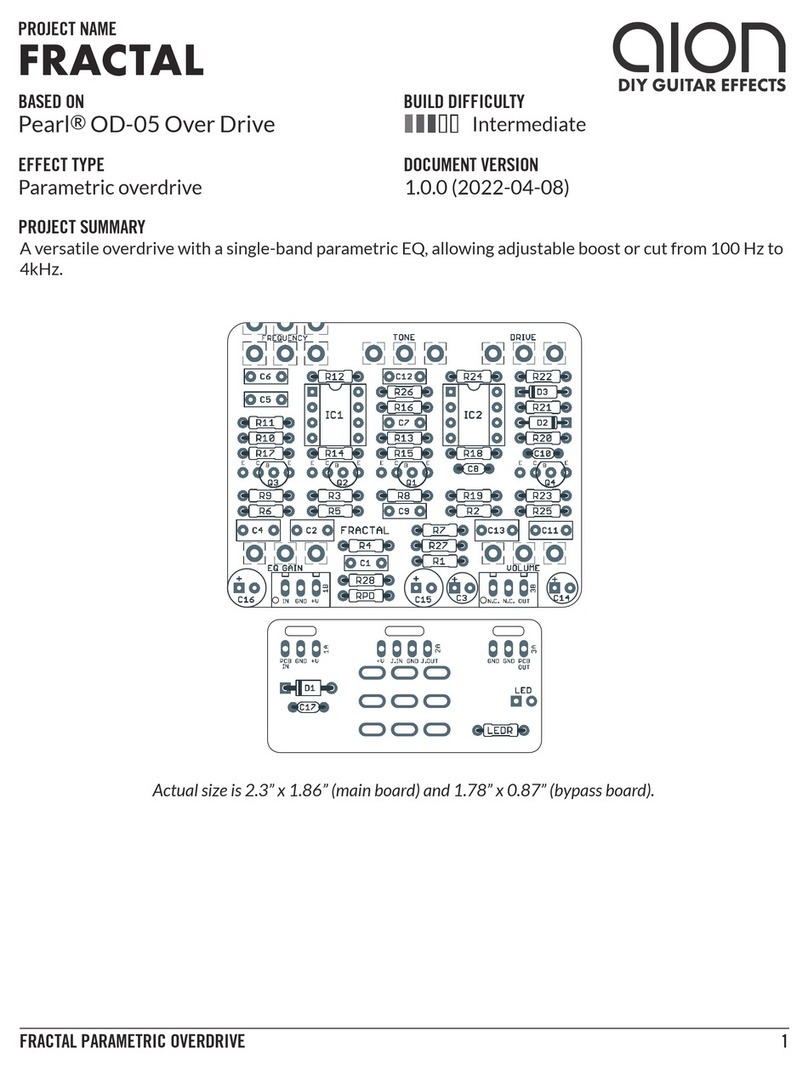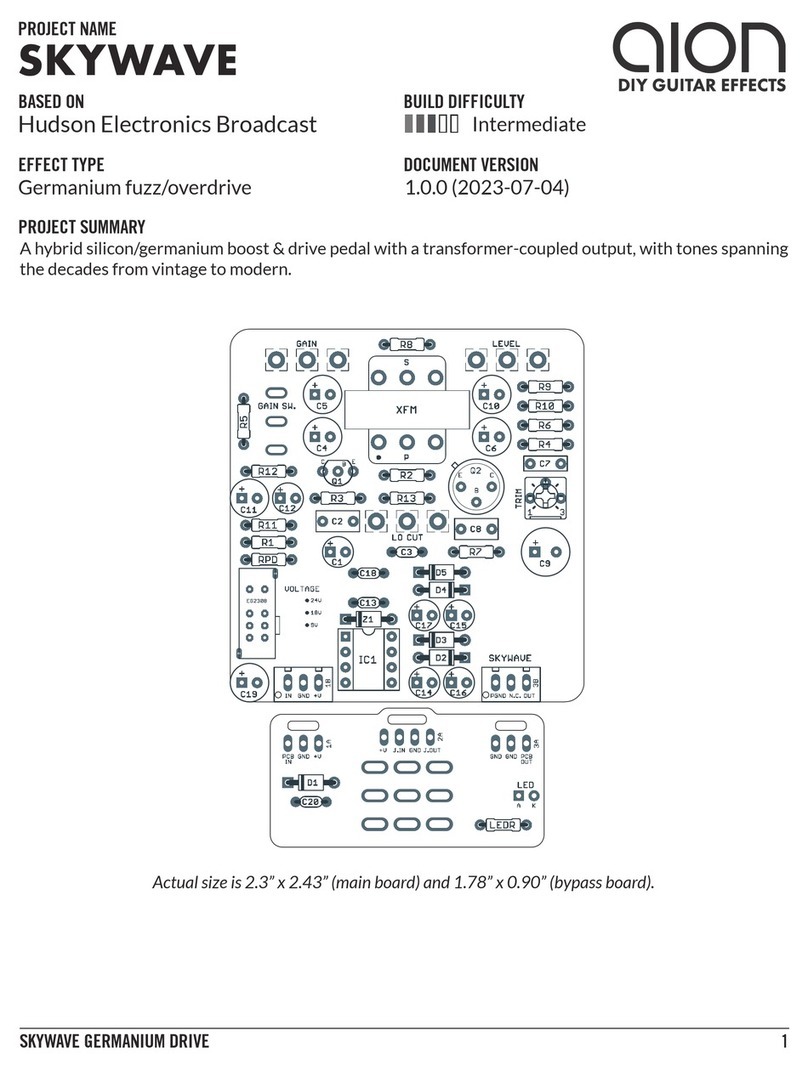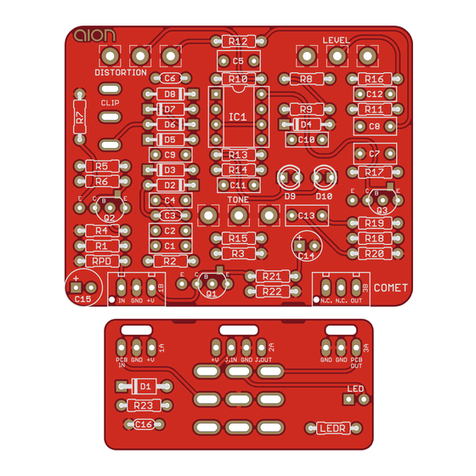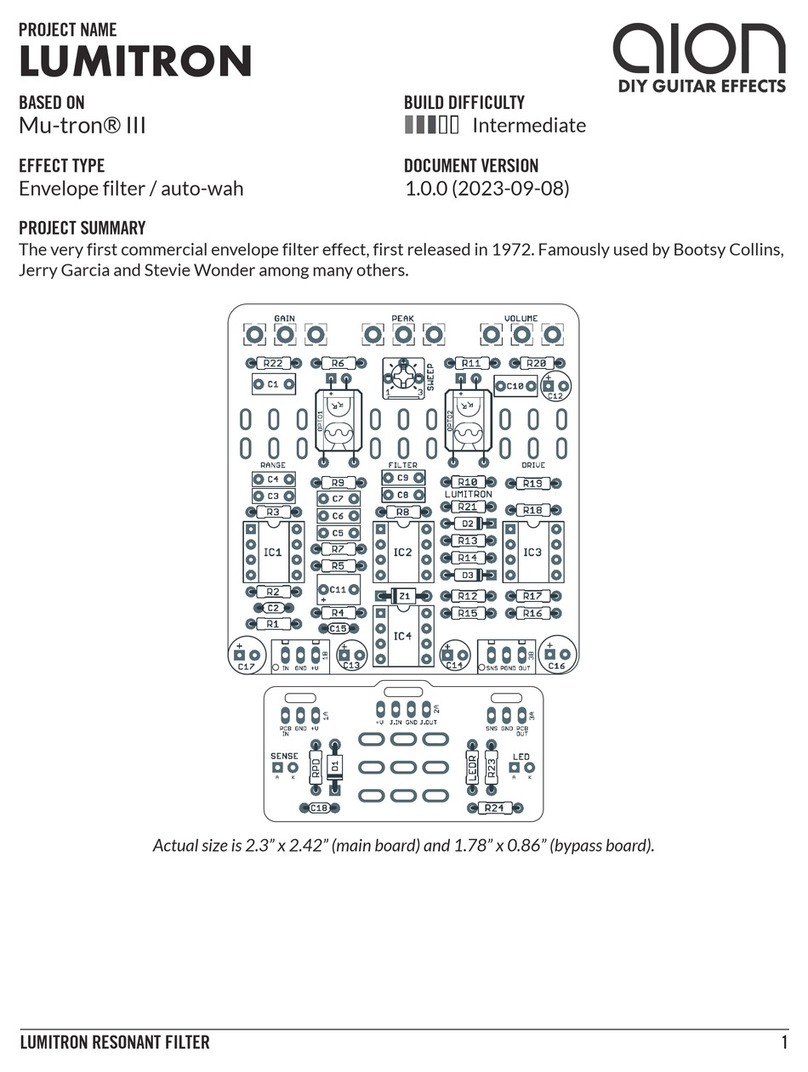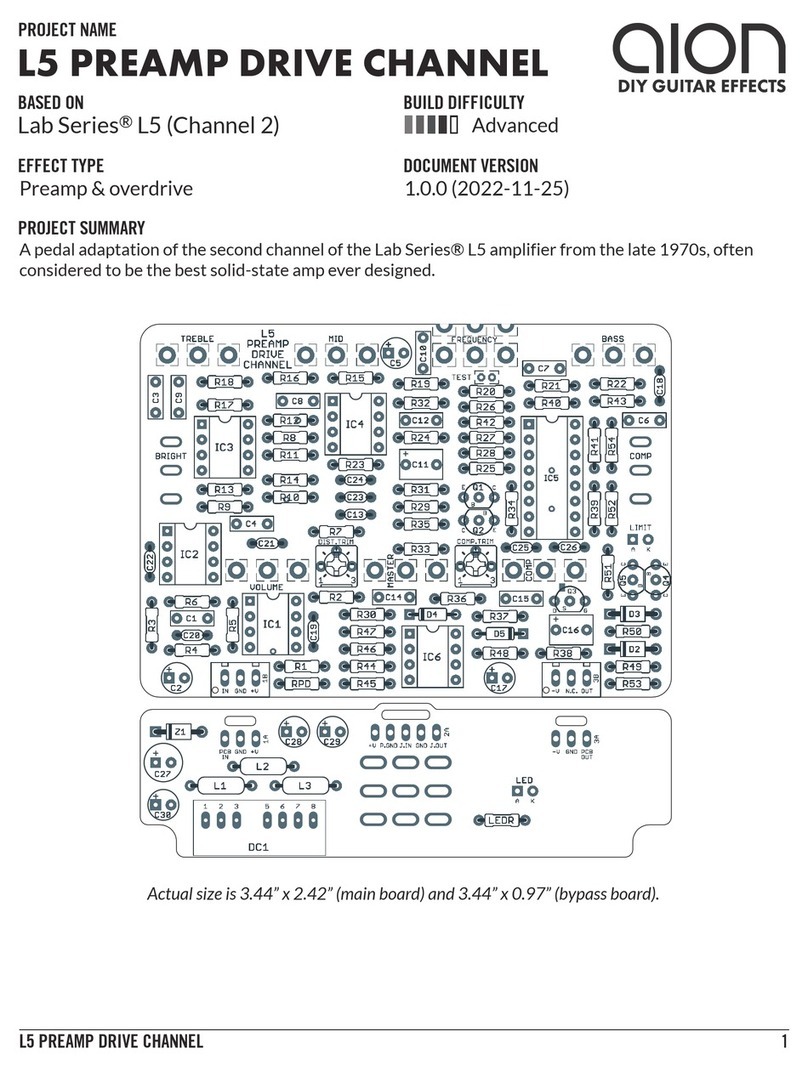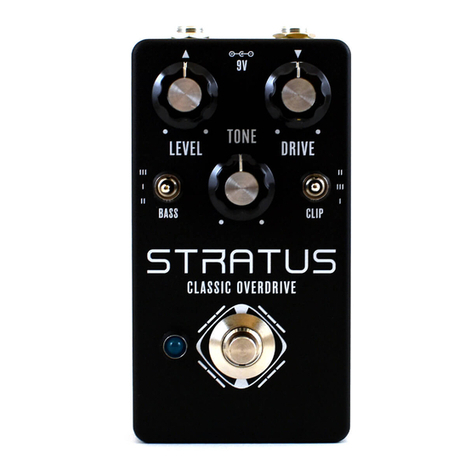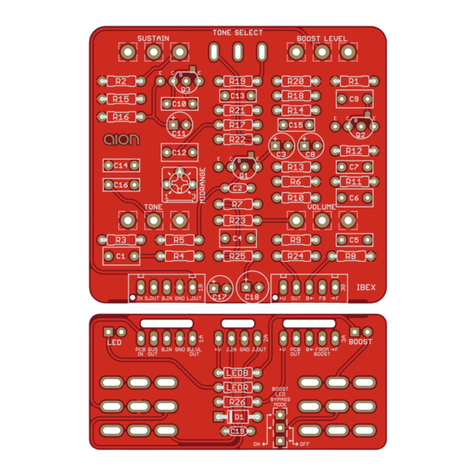
AZURE ANALOG CHORUS 4
PARTS LIST, CONT.
PART VALUE TYPE NOTES
R33 1M Metal film resistor, 1/4W
R34 220k Metal film resistor, 1/4W
R35 4k7 Metal film resistor, 1/4W
R36 4k7 Metal film resistor, 1/4W
R37 4k7 Metal film resistor, 1/4W
R38 4k7 Metal film resistor, 1/4W
R39 10k Metal film resistor, 1/4W
R40 10k Metal film resistor, 1/4W
R41 33R Metal film resistor, 1/4W
RPD 2M2 Metal film resistor, 1/4W Input pulldown resistor. Can be as low as 1M.
LEDR 4k7 Metal film resistor, 1/4W LED current-limiting resistor. Adjust value to change LED brightness.
C1 47n Film capacitor, 7.2 x 2.5mm
C2 470n Film capacitor, 7.2 x 3mm
C3 6n8 Film capacitor, 7.2 x 2.5mm
C4 100pF MLCC capacitor, NP0/C0G
C5 100pF MLCC capacitor, NP0/C0G
C6 6n8 Film capacitor, 7.2 x 2.5mm
C7 1uF Film capacitor, 7.2 x 3.5mm
C8 33n Film capacitor, 7.2 x 2.5mm
C9 3n3 Film capacitor, 7.2 x 2.5mm
C10 8n2 Film capacitor, 7.2 x 2.5mm
C11 470pF MLCC capacitor, NP0/C0G
C12 1uF Tantalum capacitor, 044A
C13 33n Film capacitor, 7.2 x 2.5mm
C14 3n3 Film capacitor, 7.2 x 2.5mm
C15 8n2 Film capacitor, 7.2 x 2.5mm
C16 470pF MLCC capacitor, NP0/C0G
C17 33n Film capacitor, 7.2 x 2.5mm CE-2B (bass version) uses 12n here.
C18 47pF MLCC capacitor, NP0/C0G
C19 100n Film capacitor, 7.2 x 2.5mm
C20 10n Film capacitor, 7.2 x 2.5mm
C21 47uF Electrolytic capacitor, 5mm Reference voltage filter capacitor.
C22 47uF Electrolytic capacitor, 5mm Reference voltage filter capacitor.
C23 220uF Electrolytic capacitor, 6.3mm Power supply filter capacitor.
C24 100uF Electrolytic capacitor, 6.3mm Power supply filter capacitor.
C25 100n MLCC capacitor, X7R Power supply filter capacitor.
Z1 1N4739A Zener diode, 9.1V, DO-41 BBD protection diode. Use 1N4743 if using MN3007.
